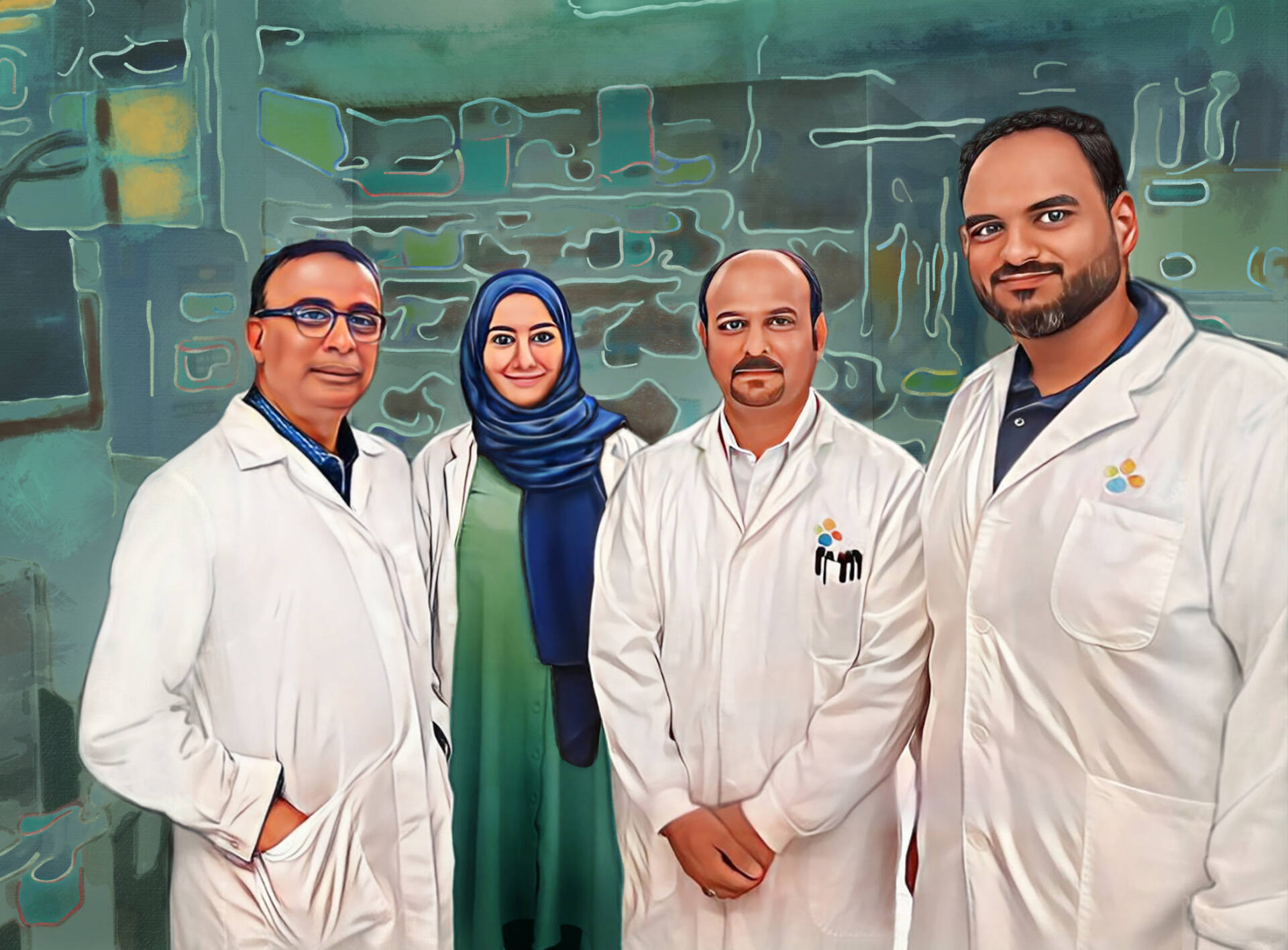On March 2, 2020, KAUST bioscientist Arnab Pain and six others met for dinner at a restaurant on Jeddah’s seaside. News of the COVID-19 outbreak was spreading but it had not yet been declared a pandemic, which was to happen just a few days later on March 11. “We were discussing how it would inevitably reach Saudi Arabia and how, as a group, we had to do something,” says Pain. The first case to reach Saudi Arabia was reported that same day: a person in the Eastern region who had returned from Iran.
By that time, Pain had spent much of his career examining the genomes of various pathogens, such as malaria, tuberculosis and healthcare-associated microbes like klebsiella, a bacterium that causes lung, bloodstream and wound infections. He was keen to use his skills and KAUST’s infrastructure to sequence the emerging virus, a type of organism he had never worked with before. “The information of whatever a pathogen does is carried within its genome,” explains Pain. “Extracting that information allows you to track its behavior and learn where it’s coming from, its nature and whether it is drug resistant.”
However, sequencing the SARS-CoV-2 genome requires access to samples. This involves a lot of logistical planning, collaboration, ethics approvals and standard operating procedures, as well as kits and reagents. Pain and his colleagues from KAUST, the Ministry of Health, other medical institutions and other Saudi universities wanted to preempt the spread of the virus and be prepared with a system and collaboration in place.
By the time the COVID-19 pandemic had reached its first peak in Saudi Arabia, Pain was receiving nasopharyngeal swab samples and their associated patient data from various parts of the country. Sometimes this involved one of his students driving long distances to pick up samples from hospitals in Jeddah, Mekkah or Medinah.
“We’d get a call from a clinician telling us they have many cases in their intensive care unit,” says Pain. Driving to hospitals during lockdown needed the help of KAUST’s head of security, who supplied all the paperwork that would allow authorized passage.
“We’d get a call from a clinician telling us they have many cases in their intensive care unit”
Colleagues from KAUST’s Health, Safety and Environment Department and KAUST’s central laboratories facilities also became readily available, even throughout the lockdowns, to operate the sequencers. “They helped us a lot,” says Pain. The work ultimately helped place some of the genetic information of the SARS-CoV-2 variants circulating in Saudi Arabia on the global map. It also identified a link between disease severity and the virus’s nucleocapsid protein, now published in Nature Communications.
KAUST biostatistician Paula Moraga applied statistical modeling to demonstrate the validity of that finding.
Now, Pain has received US$2 million in funding from the Wellcome Trust and UK Aid to lead a region-wide project called COVID-19 genomics – MENA: Towards molecular surveillance of SARS-CoV-2 genomes during the vaccination period within the Middle East and North Africa.
His enthusiasm for this project is clear. “One thing that drove me was the relative lack of representation of SARS-CoV-2 genomes from the MENA region,” says Pain. “It’s not only SARS-CoV-2 though. It’s also the same for malaria, tuberculosis and other infectious pathogens. When you look at the genome maps, it is almost like a void exists in the Middle East.”
Pain is now working with collaborators from more than 11 institutions in Saudi Arabia, Qatar, Kuwait, Oman, Egypt, Algeria and Morocco to provide a better representation of the SARS-CoV-2 variants existing and developing in the region. Importantly, collaborators in each institution will be doing their own sequencing and will receive technical training at KAUST or in the UK. “The idea is to empower them,” says Pain.
The project will allow institutions across the region to track variants of concern and variants of interest within local populations.
If the dark cloud of the COVID-19 pandemic has a silver lining for the Arab region, it could be the evolving regional research partnerships, which have been lacking due to scientists often preferring to reach out to colleagues who are further afield. “I want to break that ice,” says Pain.

